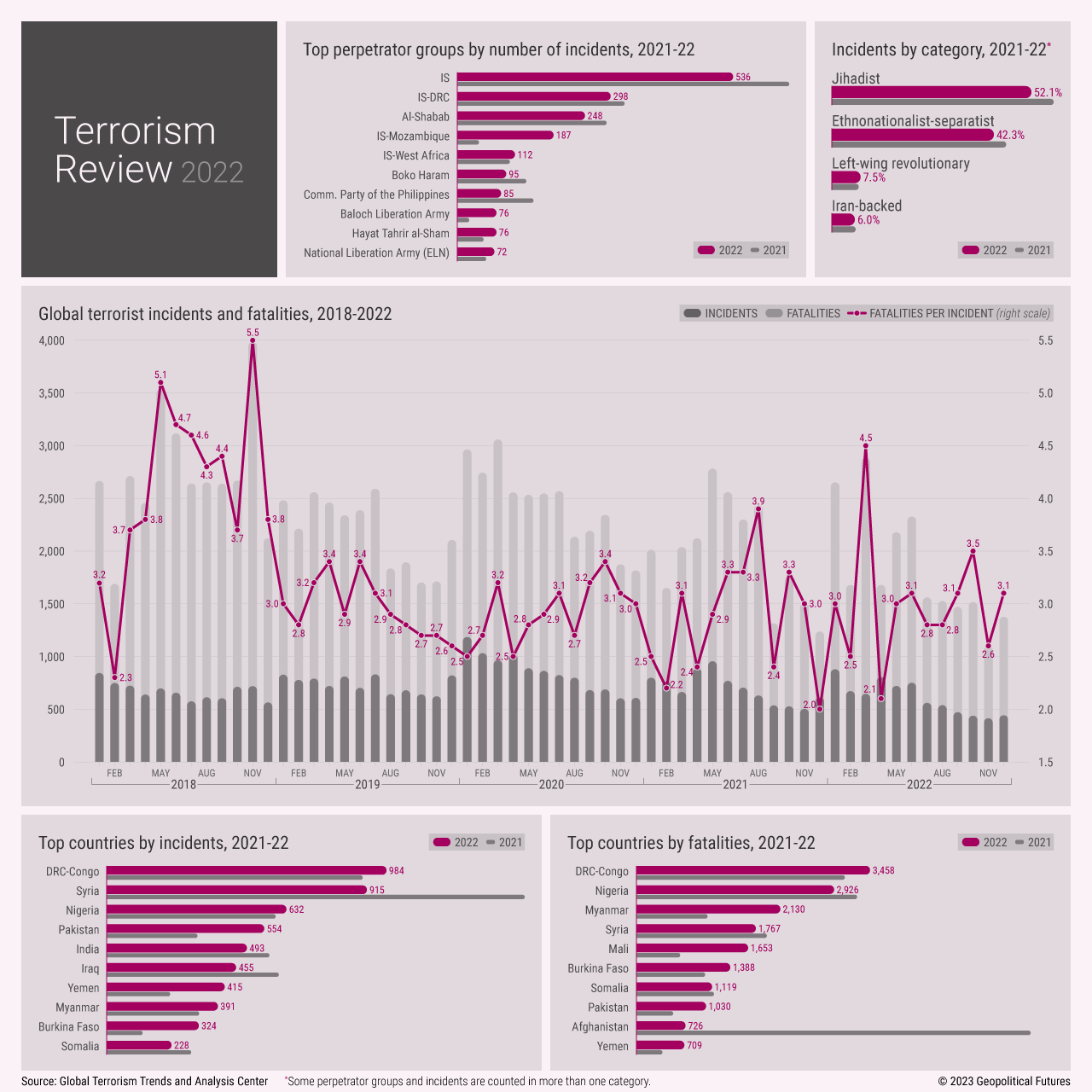In contrast to a declining terrorism threat in the West, attacks in other regions have increased in number and intensity. The data for 2022 shows improvement over the previous year, but this is because the Afghan Taliban were designated as a state actor after their takeover in the latter half of 2021. Islamic State remains the largest and deadliest terrorist group. Its affiliates in Africa (e.g., Ansar al-Sunna in Mozambique, Islamic State West Africa Province in the Sahel and the Allied Democratic Forces in the eastern Democratic Republic of Congo) make up for its dwindling presence in the Middle East.
Western-backed military operations in West Africa, including the G5 Sahel task force, had somewhat stabilized those regions. However, frustration among civilians and some local military elements with the slow pace of progress resulted in a series of coups. Military regimes in Niger, Burkina Faso and Mali promised greater security, but instead the situation has worsened; the Sahel accounted for 43 percent of all terrorism-related deaths in 2022, a 7 percent increase over 2021. The situation is similar in Myanmar, where attacks increased in 2022 and where the ruling junta is battling several armed groups.




 Special Collection – The Middle East
Special Collection – The Middle East